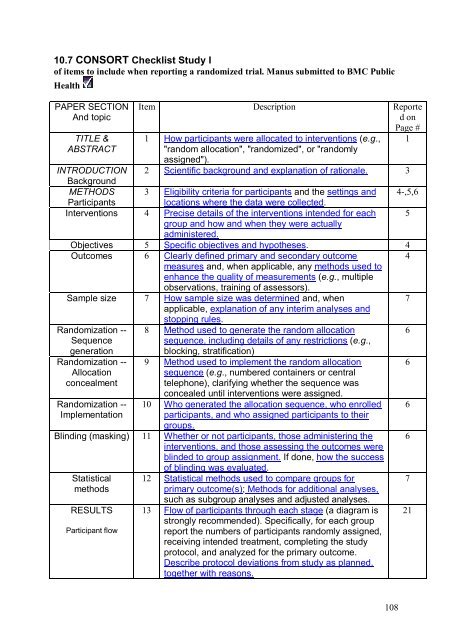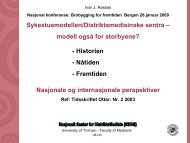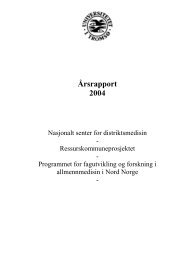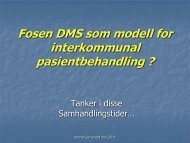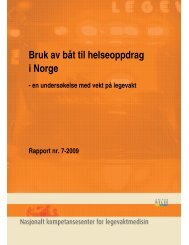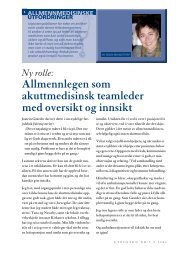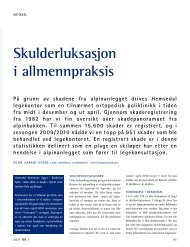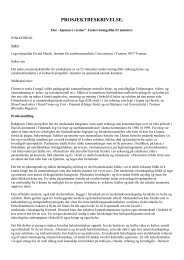Helge Garåsen The Trondheim Model - NSDM
Helge Garåsen The Trondheim Model - NSDM
Helge Garåsen The Trondheim Model - NSDM
Create successful ePaper yourself
Turn your PDF publications into a flip-book with our unique Google optimized e-Paper software.
10.7 CONSORT Checklist Study I<br />
of items to include when reporting a randomized trial. Manus submitted to BMC Public<br />
Health<br />
PAPER SECTION<br />
And topic<br />
TITLE &<br />
ABSTRACT<br />
Item Description Reporte<br />
d on<br />
Page #<br />
1 How participants were allocated to interventions (e.g., 1<br />
"random allocation", "randomized", or "randomly<br />
assigned").<br />
2 Scientific background and explanation of rationale. 3<br />
INTRODUCTION<br />
Background<br />
METHODS 3 Eligibility criteria for participants and the settings and<br />
Participants<br />
locations where the data were collected.<br />
Interventions 4 Precise details of the interventions intended for each<br />
group and how and when they were actually<br />
administered.<br />
Objectives 5 Specific objectives and hypotheses. 4<br />
Outcomes 6 Clearly defined primary and secondary outcome<br />
measures and, when applicable, any methods used to<br />
enhance the quality of measurements (e.g., multiple<br />
observations, training of assessors).<br />
4<br />
Sample size 7 How sample size was determined and, when<br />
applicable, explanation of any interim analyses and<br />
stopping rules.<br />
Randomization --<br />
Sequence<br />
generation<br />
Randomization --<br />
Allocation<br />
concealment<br />
Randomization --<br />
Implementation<br />
8 Method used to generate the random allocation<br />
sequence, including details of any restrictions (e.g.,<br />
blocking, stratification)<br />
9 Method used to implement the random allocation<br />
sequence (e.g., numbered containers or central<br />
telephone), clarifying whether the sequence was<br />
concealed until interventions were assigned.<br />
10 Who generated the allocation sequence, who enrolled<br />
participants, and who assigned participants to their<br />
groups.<br />
Blinding (masking) 11 Whether or not participants, those administering the<br />
interventions, and those assessing the outcomes were<br />
blinded to group assignment. If done, how the success<br />
of blinding was evaluated.<br />
Statistical<br />
methods<br />
RESULTS<br />
Participant flow<br />
12 Statistical methods used to compare groups for<br />
primary outcome(s); Methods for additional analyses,<br />
such as subgroup analyses and adjusted analyses.<br />
13 Flow of participants through each stage (a diagram is<br />
strongly recommended). Specifically, for each group<br />
report the numbers of participants randomly assigned,<br />
receiving intended treatment, completing the study<br />
protocol, and analyzed for the primary outcome.<br />
Describe protocol deviations from study as planned,<br />
together with reasons.<br />
4-,5,6<br />
5<br />
7<br />
6<br />
6<br />
6<br />
6<br />
7<br />
21<br />
108


